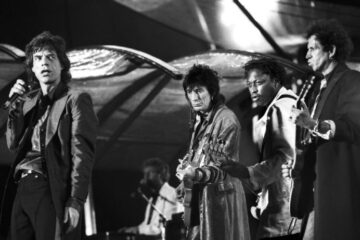How can a song make a person cry? If any musician were to muse over the whys and wherefores of this human response, then it is David Byrne, and the former Talking Heads frontman explains, “Obviously, to have this effect on us, the song and delivery have to connect to us in ways we can relate to a tragic accident is not affecting, but a tragic accident that happens as a vet is driving to a reunion with his wife and child, now THAT’S heartbreaking.”
Speaking on his radio show, Byrne continues to rattle off various tragedies that tug on our heartstrings: “Dreams within reach, visible, graspable, but then dashed to a thousand pieces. A small business goes bankrupt, not so moving, but the owner being a refugee who overcame impossible odds to achieve this dream — only to have it snatched away by a rapacious landlord… Now, we’re more engaged. Maybe it’s the specifics that pull us in?”
Then he concludes this horribly saddening invocation of all things heart-breaking by musing: “Why do we like this? Why do we luxuriate in sadness and heartbreak? I’ll bet there are way more tragic and melancholy songs than happy ones. Does it somehow paradoxically make us feel better to connect and feel the ache?”
Well, to answer his question scientifically, relishing in musical sadness is pretty much an ingrained evolutionary response. Empathy is a facet of human survival. We are pack animals, pretty puny and weak compared to the other fierce predators out there when we’re isolated and alone; thus, caring for one another is essential for our continued progress—although a few conservative capitalists could do with this being explained to them.
This is why neuroscientist Matthew Sachs explains, “One strong indicator of whether a person enjoys sad music is the degree to which they understand and relate to the emotions of others.” So, if a song has strong specifics, it delineates the emotional impact more clearly, adding a level of potency that goes beyond mere minor chords. When we engage with art on an empathetic level, it fires up the region of our brain that stimulates imagination, creating a sense of release.
For Byrne and millions of others, one song that achieves this with aplomb is John Lennon’s classic ‘Mother’. The song was borne from Lennon, through Primal Scream therapy, learning to go back into his life and address the unresolved abandonment he felt when his mother handed him over to her sister to raise him as a child.
As Yoko Ono described the therapy in an interview with Uncut: “It’s just a matter of breaking the wall that’s there in yourself and come out and let it all hang out to the point that you start crying. He was going back to the days of when he wanted to scream, ‘Mother’. He was able to go back to that childhood, that memory.”
Lennon would add: “In the therapy, you really feel every painful moment of your life — it’s excruciating, you are forced to realise that your pain, the kind that makes you wake up afraid with your heart pounding, is really yours and not the result of somebody up in the sky.”
Screaming, crying and convulsing en masse was encouraged as a way to lift the malaise of a stiff-upper-lipped surface, to let the atavistic side of life break out. This way of thinking brought about an almost caustic introspection on his solo masterpiece John Lennon/Plastic Ono Band. This is typified on the song ‘Mother’ more so than any other track in his back catalogue. The cathartic release of addressing a long-repressed emotion is palpable in the track.
To frame it in Byrne’s view, a man screaming about his sad past in a pop song might not be all that affecting, but when it’s the most famous musician on the planet, extolling to the masses that even he is saddled with hardship from a tragic past he had tried so fiercely to overcome, the result has plenty pretending that they’ve just been cutting onions.



